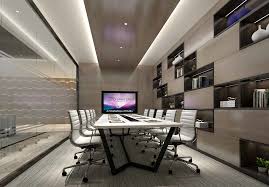Office cabinetwork is more than just divisions and chairpersons; it’s an integral part of the work terrain that influences productivity, comfort, and, indeed, the overall culture of a plant. From ergonomically designed chairpersons to cooperative workstations, the cabinetwork in an office plays a pivotal role in shaping the daily habits of workers. This composition explores the colorful aspects of office cabinetwork, including its elaboration, essential factors, design principles, accouterments, and current trends.
The Elaboration of Office Furniture
The conception of office cabinetwork has evolved significantly, reflecting changes in work styles, technology, and organizational culture. In the early 20th century, office cabinetwork was primarily functional, with heavy rustic divisions and chairpersons that prioritized continuity over comfort. As the nature of work shifted and the significance of hand well-being became more honored, office cabinetry began incorporating ergonomic designs and flexible configurations.
Key Components of Office Furniture
1. Partitions
Partitions are the foundation of any office, furnishing a devoted workspace for workers. They come in colorful styles, including traditional, standing, and adjustable height divisions. Ultramodern divisions frequently feature erected-in-string operation systems and ergonomic designs to support healthy posture.
2. Chairs
Ergonomic chairpersons are essential for hand comfort and productivity. Features such as malleable height, lumbar support, and permeable accommodations help with strain and discomfort during long periods of sitting.
3. Workstations
Workstations can be individual or cooperative, designed to support different types of work. Modular workstations offer inflexibility, allowing associations to reconfigure spaces as demanded. These can include cells, benching systems, and open-plan divisions.
4. Storage Results
An effective storehouse is pivotal for maintaining a systematized office. Filing closets, shelves, and particular lockers give space for documents, inventories, and specific particulars. Integrated storehouse results help maximize space and reduce clutter.
5. Meeting Apartments
Furniture for meeting apartments includes conference tables, chairpersons, and audiovisual outfits. The design of meeting apartments can vary from formal boardrooms to casual huddle spaces, depending on the association’s requirements.
6. Event Areas
The event area is the first point of contact for callers and guests. Furniture in this space includes event divisions, seating, and display units. The design should reflect the company’s brand and produce a welcoming atmosphere.
Design Principles
Several design principles guide the selection and arrangement of office cabinetwork to produce a functional and aesthetically pleasing work environment.
1. Ergonomics
Ergonomics is a critical consideration in office cabinetwork design. Ergonomic cabinetwork supports the body’s natural posture, reducing the threat of musculoskeletal diseases and perfecting comfort. This includes malleable chairpersons, divisions, and keyboard servers.
2. Inflexibility
The ultramodern plant frequently requires flexible cabinetwork results that can acclimatize to changing requirements. Modular cabinetwork systems and malleable divisions allow easy reconfiguration to accommodate different tasks and platoon sizes.
3. Collaboration
Encouraging collaboration is a crucial thing in numerous office designs. Open-plan layouts, collaborative tables, and informal meeting areas foster commerce and cooperation. Furniture should be chosen to support this cooperative conditioning.
4. Storage Efficiency
Effective storehouse results help keep the office organized and reduce clutter. Furniture with intertwined storehouses, similar to divisions with snuggeries and shelves, maximizes space and keeps essential particulars within easy reach.
5. Aesthetics and Brand Identity
Office cabinetwork should reflect the company’s brand and culture. The choice of colors, accessories, and styles can produce a cohesive look that reinforces the association’s identity and values.
Accoutrements and Finishes
The accouterments and homestretches used in office cabinetwork impact its continuity, conservation, and appearance. Then, there are some standard options:
1. Wood
Wood is a traditional material for office cabinetwork, offering a warm and professional look. Solid wood and veneers are popular for divisions, conference tables, and storehouse units. Wood finishes can range from natural stains to painted shells.
2. Glass
Glass is generally used for desktops, conference tables, and partitions. It adds a contemporary and open sense to the office, allowing easy cleaning and conservation.
3. Laminate
Laminate is a cost-effective and adaptable material for divisions, workstations, and storehouse units. It comes in various colors and patterns, mimicking the look of wood, gravestones, and other accouterments.
4. Fabric
Fabric is used for upholstery, aural panels, and soft seating. It provides comfort and can be named in colorful colors and textures to round the office design.
5. Plastic
Plastic is used for various office cabinetwork factors, including chairpersons, storehouse units, and accessories. It’s featherlight, durable, and available in multiple colors.

